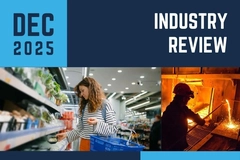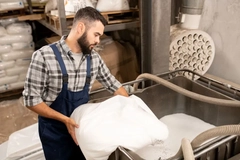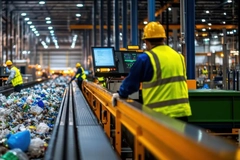Australasian Packaging Conference 2025: Reimagining design for functionality and sustainability

The 2025 Australasian Packaging Conference has highlighted the importance of supply chain collaboration and building local refill, reuse, and recycling systems, says Nerida Kelton, executive director at the Australasian Institute of Packaging (AIP), and vice president of sustainability and save food at the World Packaging Organization (WPO).
The 2025 Australasian Packaging Conference, organized by the AIP, brought together packaging companies and experts from Australia, New Zealand, and Southeast Asia.
Packaging Insights speaks to Kelton about the event, which had the theme “Reimagine Packaging Design,” to discuss how packaging experts can create functional yet sustainable packaging products and processes.
She argues that packaging providers must think globally and act locally using regional operations and domestic materials.
What were the key outcomes of this year’s conference, and how do they compare to previous editions?
Kelton: In 2023, we talked about how to meet the 2025 National Packaging Targets. In 2025, we are not only showcasing what has happened over the last two years, but also what else needs to be done to ensure that we have a viable industry in the region.
The conference discussed the importance of packaging providers thinking globally, but acting locally (Image credit: AIP). It was clear to anyone who attended the conference that we are a much closer industry across all parts of the value chain, as conversations were honest and thought-provoking as to how we can work together to achieve the results needed for a circular packaging economy.
The conference was a hotbed of side discussions, networking, and knowledge sharing that can only benefit the industry.
What does the theme “Reimagine Packaging Design” mean?
Kelton: It means it is time to stop designing packaging without looking at the actual environmental impacts of the packaging and product. This means that packaging designers and technologists need to rethink how they design to find solutions that are fit for purpose and function, are recycle-ready, and offer the lowest environmental impact.
Packaging needs to be redesigned to focus on reducing and reusing materials, incorporating more domestic recycled content, and designing for reuse and refill wherever possible.
The good news is that many companies are well on their way to reimagining their packaging design, which means they will be ready when the National Mandated Design standards come into effect and the eco-modulation program is launched.
Why was this theme chosen for the 2025 Australasian Packaging Conference?
Kelton: The theme “Reimagine Packaging Design” was chosen as the packaging industry is in a state of change and rethinking the way packaging is designed.
Packaging needs to not only be designed to meet the traditional waste hierarchy of reduce and reuse, but it also needs to be recycle-ready for the country that it is sold in, and also have circularity wherever possible.
What is key for designing efficient packaging waste management, EPR, and DRS schemes?
Kelton: The conference started with a panel of circular economy and circular design experts who set the scene on design thinking.
 The conference touched on the importance that packaging plays in keeping food fresh.Discussions detailed how hard the industry has been working and showcased best practice examples and case studies from multinational companies, start-ups, and SMEs.
The conference touched on the importance that packaging plays in keeping food fresh.Discussions detailed how hard the industry has been working and showcased best practice examples and case studies from multinational companies, start-ups, and SMEs.
I presented a global perspective on sustainability for different countries and regions. It is important to understand that while we need to think globally, we must act locally when designing appropriate waste management programs, extended producer responsibility schemes, eco-modulation programs, and container deposit schemes.
I was also able to showcase all of the work that the WPO has undertaken to develop a Global Packaging Design for Recycling Guide, which is free of charge and available in 15 languages on the WPO website.
Day one discussions also touched on the important role that packaging plays in minimizing food loss and waste, including safe and inclusive food packaging design guidelines, sustainable packaging design research, and date labeling research.
We also intentionally invited key packaging researchers, young people, and graduates to speak about their work. It is so important that they have a voice at the table, as they will be our future leaders in the packaging industry.
What other topics were discussed at the conference?
Kelton: On day two, we discussed the future roadmap for the region, the challenges, barriers, and gaps. For Australia, we focused on how each packaging substrate tracks against the 2025 National Packaging Targets, like what more needs to be done, and how we get there as an industry. Important topics included working with waste recovery, recycling, and processors.
We also discussed how it is critical that everyone, from the packaging manufacturers to the brands to the waste and recovery sector, work together to find collaborative solutions for end markets.
We also discussed curbside collection of soft plastics and flexibles and how to recover and find end markets for problematic materials that can not be accepted through traditional mechanical recovery facilities. Day two also discussed national mandated design standards, eco-modulation best practices from across the globe, and EPR programs that are successful and working in various countries.










